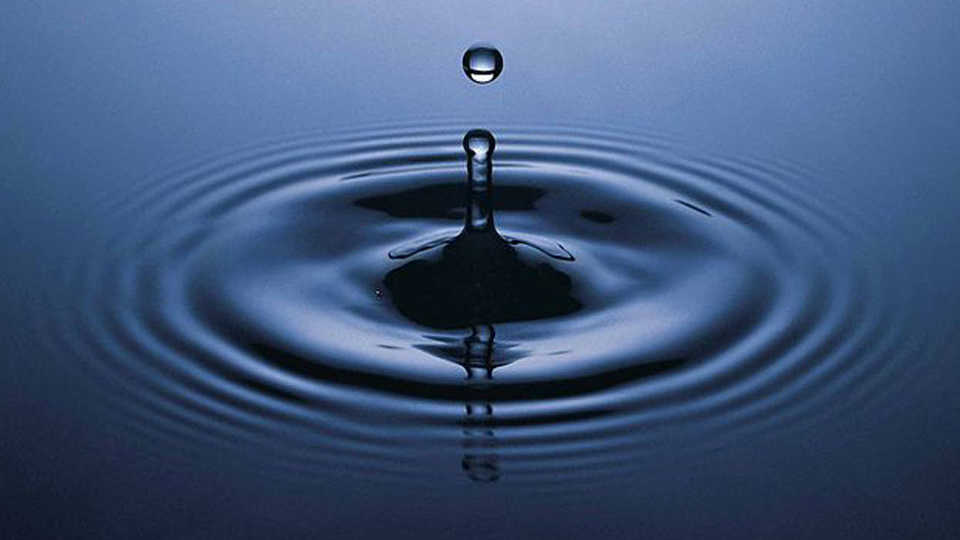Students will:
- learn that the Earth has a finite amount of fresh water.
- learn ways to conserve fresh water and brainstorm ideas to increase usage of untapped water resources in their local area.

Photo by Tim McCabe, USDA Natural Resources Conservation Service
Our planet's surface may be mostly covered in water, but how much of that can we use? In this activity, students will see how water is distributed across different sources, how much can be used by humans, and will brainstorm ways to decrease their usage of fresh water.
Students will:
Prepare one liter of colored liquid. You can use a colored drink, like Tang or Kool-Aid, or just put food coloring in plain water. The color will make it more easily visible for the demonstration. Set all materials on a table in front of the classroom where students can observe the demonstration.
List these sources on the board so they will be visible throughout the activity. Discuss them with your students, making sure they understand what each one means.
Congratulate this group on choosing a source that contains so much water, BUT before you hand it to them, dump a generous amount of salt into the liquid.Explain that while the oceans contain most of the planet’s water, that water is too salty for us to use.There are desalination processes that can remove the salt and make the water drinkable, but these processes are expensive and use a lot of energy.
(Note: these numbers are rounded off to make them feasible to measure, but represent the real proportions as closely as possible.As a result of rounding off, the amounts add up to 999.692 mL rather than exactly 1000 mL.)
If you want your students to practice their measuring skills, you can structure this activity so that each student gets a chance to measure. Put students in groups of six, and give each group a liter of water. Each student in the group will select (or be assigned) a source of water. Write the measurements on the board, and have each student measure out the appropriate amount into a cup.
Water (H2O) is a very important molecule. Because of water, Earth is able to support many different life forms. In humans, water makes up between 68% and 72% of the body volume (depending on gender and body composition), and it is so important that we cannot survive longer than 3 days on average without replenishment.
Because water is such a vital resource, it is important to understand how much is available, where water comes from, and how to make sure we will have enough drinkable water in the future.
If you look at a model globe, approximately 70% of the surface is covered by water. Of that total water, 97% is in the oceans and is undrinkable without desalination treatment (to remove salt). Of the remaining fresh water, less than one half of one percent is available in surface sources like lakes, rivers, and swamps. Most fresh water exists as glacial ice or is trapped underground (see charts).
The Bay Area gets water from a variety of sources. The San Francisco Public Utilities Commission (SFPUC) manages reservoirs in 3 distinct watersheds. The majority of this water, supplying 85% of the Bay Area, comes from the Hetch Hetchy reservoir in Yosemite National Park. This reservoir collects water from the 1189 square kilometer (459 square mile) Tuolumne River watershed, which is fed by snowmelt from the Sierra Nevada mountains. Two smaller reservoirs, Lake Eleanor and Cherry Lake also collect moderate amounts of water from the Eleanor Creek and Cherry Creek watersheds, respectively.
Other watersheds include the Alameda watershed, which serves 2.4 million people in the Bay Area, the Peninsula Watershed, and the Lake Merced Watershed, which supplies an aquifer serving Daly City and South San Francisco.
Adapted from Activity 5.1 “A Drop in the Bucket” in the California Coastal Commission Science Activity Guide for Waves, Wetlands, and Watersheds. Can be done as a demonstration or, for older students, in groups.
California Department of Water Resources
San Francisco Public Utilities Commission
Image: Photo by Tim McCabe, USDA Natural Resources Conservation Service; originally sourced from https://photogallery.nrcs.usda.gov/res/sites/PhotoGallery/index.html (Filename: NRCSIA99536.tif)
Performance Expectations:
DCIs